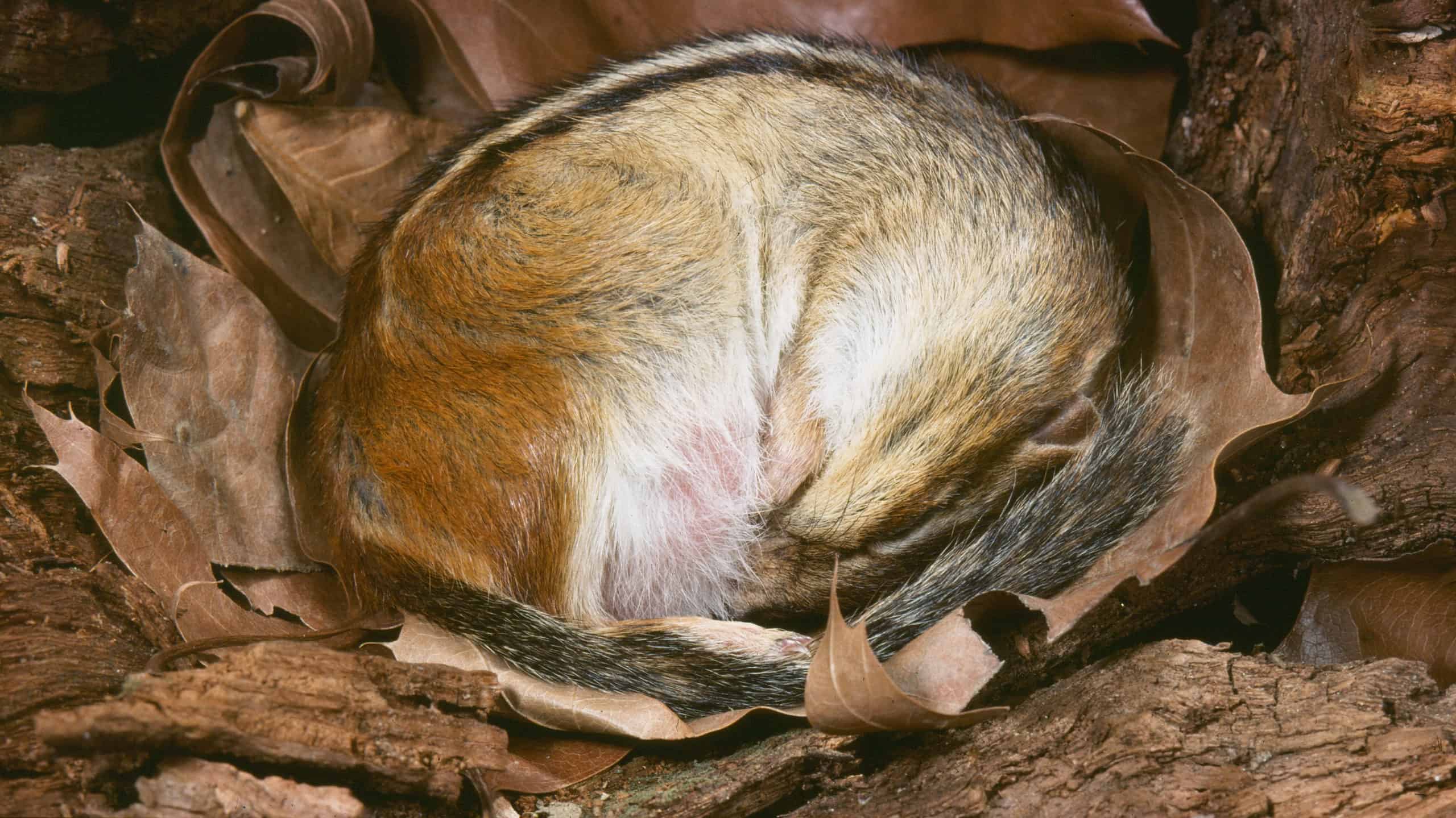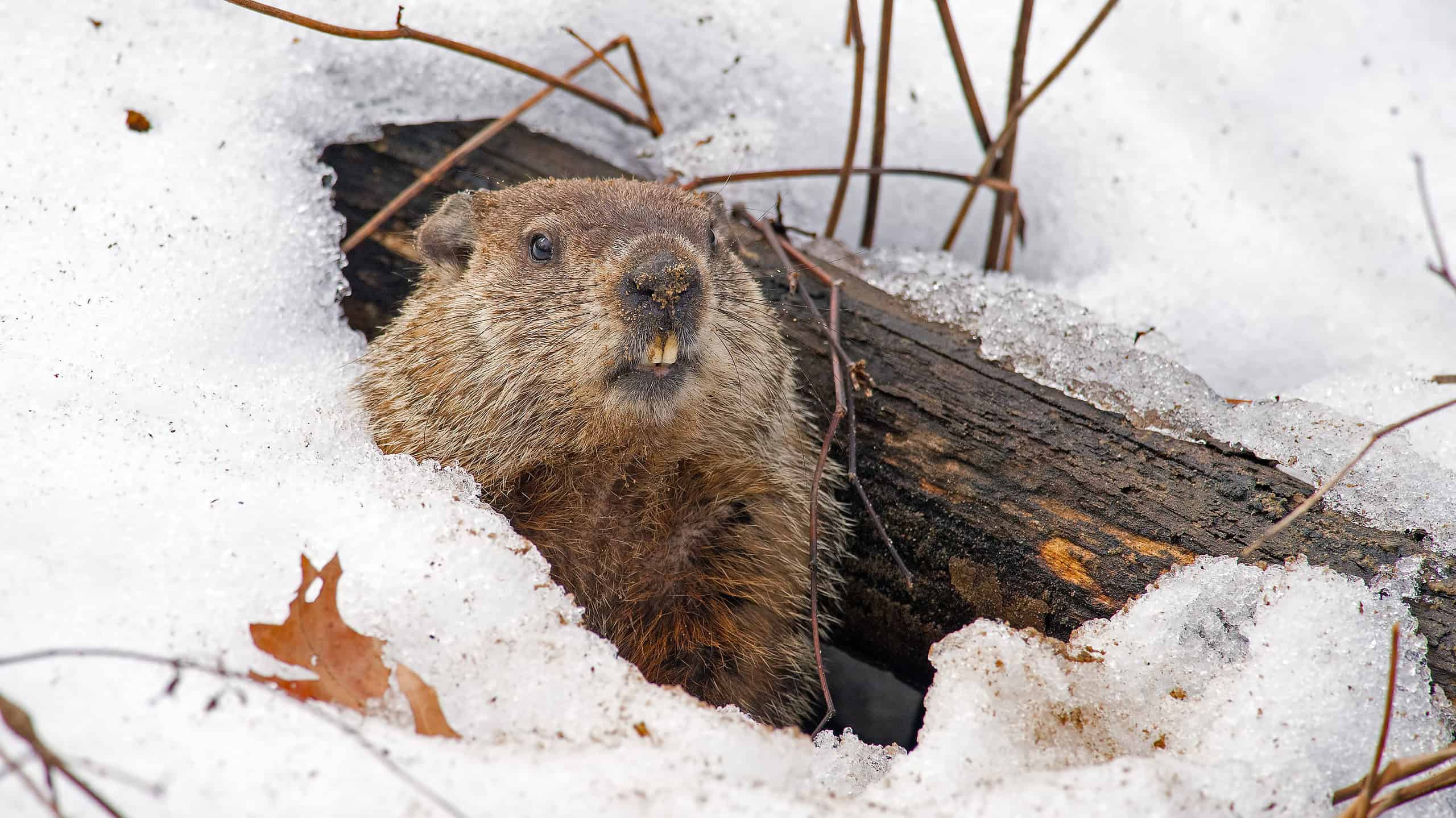Hibernation is probably the first thing that comes to mind when thinking about survival techniques to help animals get through the winter. In reality, fewer animals than you might think are true hibernators. Some simply enter a state of torpor. Let’s dive into the differences between these two survival methods.
Definition of Torpor and Hibernation
Hibernation is a voluntary period of time during the winter that animals spend in a dormant state of regulated hypothermia. Hibernation allows animals to conserve energy for weeks or even months.
During this time, animals are in a metabolic state that is about 1-2% of their active state, according to Greenwood Wildlife. Contrary to popular belief, some hibernating animals do wake up every few weeks to eat or use the bathroom.
Torpor is a state of decreased physiological activity, during which animals reduce their body temperature and slow their metabolic rate. Animals in a state of torpor only remain in this state for a few hours per day before waking up.

Some animals enter a state of torpor to survive the cold winter.
©Breck P. Kent/Shutterstock.com
Differences Between Torpor and Hibernation
One of the main differences between torpor and hibernation is that torpor appears to be an involuntary state. Animals like mice enter torpor if they become too cold or can’t consume enough calories.
Torpor also usually lasts for just a few hours during the daytime (or nighttime for nocturnal animals). On the other hand, hibernation is an extended form of torpor and is voluntary. Many animals prepare for hibernation by eating extra food and storing it as body fat.
During hibernation, an animal’s body temperature drops much more than it does for animals who experience daily torpor. For example, species with daily torpor show a decrease in temperature from about 38ºC (100.4°F) to 18ºC (64.4°F) on average, according to BBC Wildlife Magazine.
On the other hand, hibernators average daily temperature is only around 5°C (41°F). Incredibly, small mammals such as arctic squirrels can even reach core temperatures of -3°C (26.6°F).
The Benefits and Drawbacks of Torpor vs. Hibernation
Hibernation and torpor are used for similar purposes — to maintain body temperature and conserve energy during cold conditions or when food is scarce. However, there are drawbacks to each survival method.
Both torpor and hibernation leave animals more vulnerable to predators, but in the case of torpor, animals are able to wake up quicker to avoid danger. It takes hibernating animals longer to emerge from their dormant state.
On the other hand, animals that enter torpor expend a fair amount of energy to wake up every day. According to the National Forest Foundation, waking up involves violent shaking and muscle contractions, similar to shivering. Hibernating animals can go weeks without waking up.
With this in mind, it’s difficult to say which survival method is better in the case of torpor vs. hibernation. Torpor is much more common, but for those who can enter true hibernation, this tactic can be very beneficial.
Examples of Animals That Use Torpor and Hibernation
A variety of animals use daily torpor or hibernation as a survival method. Some notable animals that hibernate include the following:
- Groundhogs
- Flat-tailed dwarf lemurs
- Hedgehogs
- Bats
- Ground squirrels
- Salamanders
- Frogs
- Turtles
- Ladybugs
- Snails
Interestingly, there has been some debate about whether or not bears are true hibernators. One reason is that these creatures experience a less significant drop in body temperature than most other hibernating animals.
Among birds, torpor is by far more common than hibernation. Only a few species such as the common poorwill, are known to hibernate. Some of the most common animals that undergo torpor are birds and small mammals, such as marsupials, rodents, and bats.

The common poorwill is one of the few species of birds that hibernate.
©vagabond54/Shutterstock.com
Humans and Hibernation
While it might sound strange, some research has been conducted on the possibility of hibernation in humans. According to Healthline, human’s prehistoric ancestors did hibernate. More recent research even suggests that early humans from half a million years ago could have employed this survival tactic as well.
“I think it’s an ancestral trait we’ve lost,” Dr. Sandy Martin an expert on hibernation and professor emerita at the University of Colorado, told Healthline. “That means that we have the genes we need to hibernate.”
Humans likely did not evolve to hibernate because of the disadvantages associated with a prolonged state of torpor. A hibernating human cannot reproduce or defend against predators. However, some people believe that inducing torpor in humans could be beneficial in the medical field and for space exploration.
In the case of the latter, a state of hibernation could preserve valuable resources and reduce a human’s food and water intake on long space flights. In the medical field, a state of hibernation could hypothetically cause cancers to go dormant until better treatment options emerge.
Thank you for reading! Have some feedback for us? Contact the AZ Animals editorial team.








